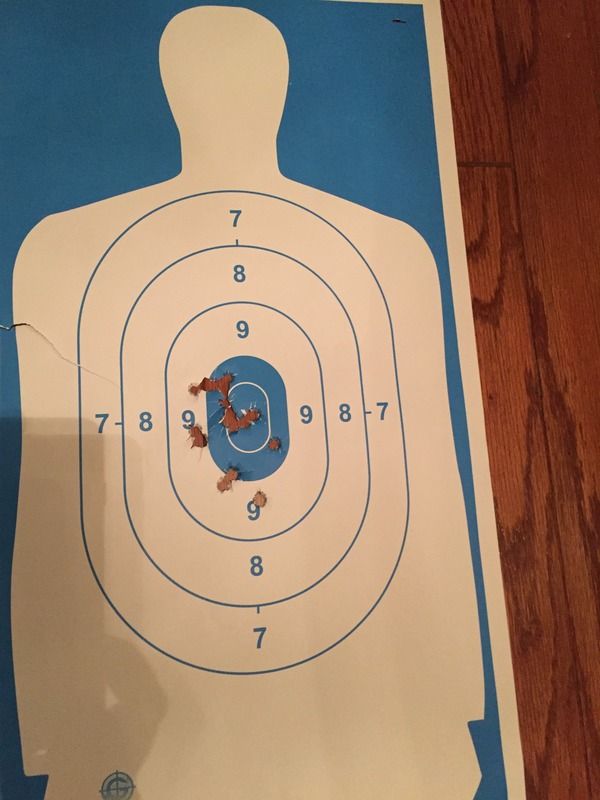Modernist, Orphist, Futurist, Constructionist, Cubist... The "style" in which you "paint the picture" on your target only matters so much. At the end of the day, your goal is to leave your aggressor feeling like a Picasso image, or some unfortunate soul in a Dali painting.
One drill that the OP might find instructive is to hold the pistol at low-ready, raise the pistol so that the eye catches the front sight, fire 2 shots, and return to low-ready. The shooter should remind himself that their eyesight MUST focus on the front sight, and nothing else. Try doing this 5 times in a row, and be honest with yourself about how well you focused on the front sight. Generally, group size will shrink as more attention is paid to the front sight.
Judging from the targets, the OP is doing all or most things correctly, and the finer points will come with the passage of time. You might also want to limit your range time to around 2 hours, at least initially. Concentrating on shooting a pistol well can be mentally exhausting. Some people won't fire 50 rounds in 2 hours, while others will burn through 100 or more.
Firing 40 rounds, all in four very tight 10-shot groups is better training than firing 100 rounds in 10-shot groups that cannot be covered by a hubcap. Once the capacity to shoot accurately on demand has been obtained, it can then be balanced against shooting faster, for best effect.







